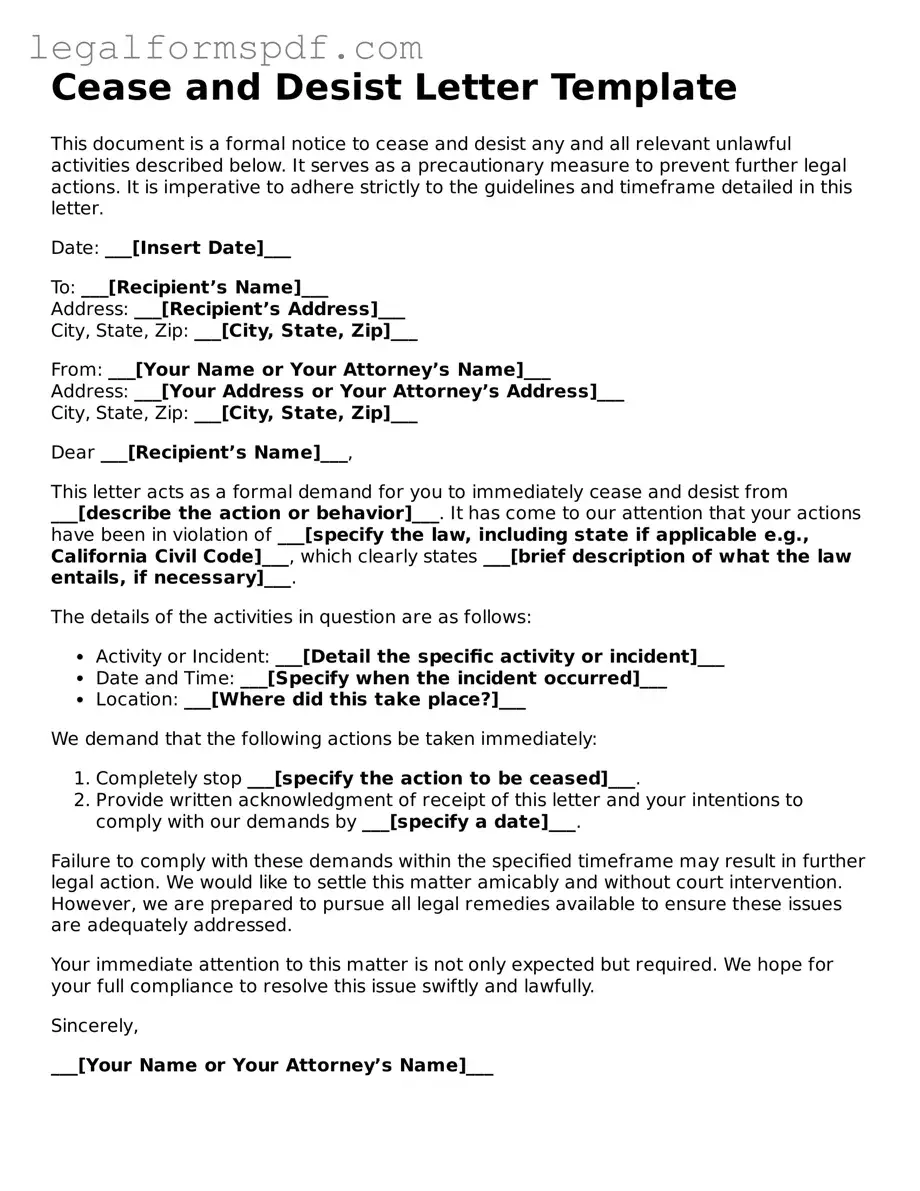Cease and Desist Letter Template
This document is a formal notice to cease and desist any and all relevant unlawful activities described below. It serves as a precautionary measure to prevent further legal actions. It is imperative to adhere strictly to the guidelines and timeframe detailed in this letter.
Date: ___[Insert Date]___
To: ___[Recipient’s Name]___
Address: ___[Recipient’s Address]___
City, State, Zip: ___[City, State, Zip]___
From: ___[Your Name or Your Attorney’s Name]___
Address: ___[Your Address or Your Attorney’s Address]___
City, State, Zip: ___[City, State, Zip]___
Dear ___[Recipient’s Name]___,
This letter acts as a formal demand for you to immediately cease and desist from ___[describe the action or behavior]___. It has come to our attention that your actions have been in violation of ___[specify the law, including state if applicable e.g., California Civil Code]___, which clearly states ___[brief description of what the law entails, if necessary]___.
The details of the activities in question are as follows:
- Activity or Incident: ___[Detail the specific activity or incident]___
- Date and Time: ___[Specify when the incident occurred]___
- Location: ___[Where did this take place?]___
We demand that the following actions be taken immediately:
- Completely stop ___[specify the action to be ceased]___.
- Provide written acknowledgment of receipt of this letter and your intentions to comply with our demands by ___[specify a date]___.
Failure to comply with these demands within the specified timeframe may result in further legal action. We would like to settle this matter amicably and without court intervention. However, we are prepared to pursue all legal remedies available to ensure these issues are adequately addressed.
Your immediate attention to this matter is not only expected but required. We hope for your full compliance to resolve this issue swiftly and lawfully.
Sincerely,
___[Your Name or Your Attorney’s Name]___
